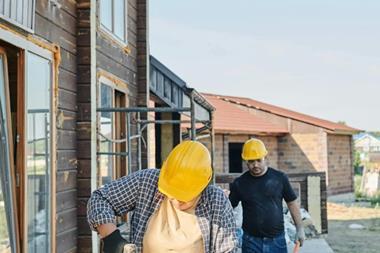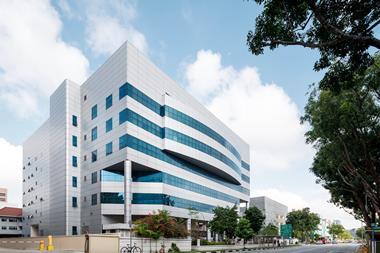Institutional-grade property in Moscow is still in short supply. While this bodes well in some respects, there are still considerable risks when entering the market, as Richard Lowe finds
The real estate investment story emanating from Russia is an enticing one. The nation's growing middle class is enjoying more disposable income and has upwardly mobile aspirations. But the pent-up demand for modern shopping centres and residential alternatives to the glut of Soviet-era housing is not being matched by supply, either in terms of volume or quality.
Meanwhile, Moscow, which today is home to one of the most expensive office markets in the world, has been ranked top for investment and development prospects by the Urban Land Institute (ULI) and PricewaterhouseCoopers' (PwC) latest ‘Emerging Trends in Real Estate Europe' report on page 62.
To make a proper market assessment, of course, it is necessary to weigh up more than the potential upsides. And it is in potential downsides that Russia's appeal begins to suffer. For example, while the ULI/PwC survey highlights investors' positive perceptions of Moscow as having some of the best prospects due to a huge demand-supply imbalance, it also revealed that investors view the city as the most risky real estate investment market in Europe.
This raises the question: is the investment story for Russia too convincing for investors to ignore simply on the basis that they feel uncomfortable with its associated risks, or are investors right to be cautious of the market, especially if they are concerned that its risks are not being properly priced into the equation?
Pierre Cherki, co-CEO at RREEF Europe, does not believe the Russian real estate investment story is so strong that institutional investors cannot ignore it, especially if you consider that the overall volume of investment in central and eastern Europe (CEE), including Russia, is "still relatively small".
"However, it is a good enough story to at least look at it seriously," he adds. "As part of a diversified portfolio it is an interesting market where investors could potentially get a higher yield that would compensate for some of the additional risks."
The surprise, Cherki believes, is that while an increasing number of investors have started to look at Russia seriously over the last three years, few have actually committed capital to the market. "A lot have taken the plane to Moscow and maybe to St Petersburg and some of the other regional cities. But they realise it is a complex market," he says.
Jon Hodnett, managing director at JER Partners, remembers back to when the real estate investment management company became active in Russia approximately four years ago.
"We were struck by the disconnect between perception and reality - perception in the west about how dangerous it is here and how difficult it is to do business here compared to the compelling market opportunity and the relative sophistication of the market," he says.
Hodnett describes his experience of raising capital in recent years from north American investors for the Marbleton Property Fund, a vehicle run in partnership with Alfa Capital, investing across sectors in Russia, the Ukraine and other nations of the Commonwealth of Independent States (CIS). "We sent investors materials and talked to them on the phone, but until they made the trip over to see for themselves they were extremely sceptical. Once they took the time to see the market for themselves, they really picked up on the opportunity and most of them invested. That was very enlightening for us."
One pension fund that looks to be on the verge of taking the plunge is the €9bn Nordrheinische Ärzteversorgung (NAEV), the German pension fund for doctors in the North Rhine region. The investor is currently exploring ways to gain exposure to the market, including a number of non-listed funds that invest in both Russia and Turkey.
Hermann Aukamp, chief investment officer at NAEV, admits "there is a lot of risk" when committing capital to Russian real estate. "Before investing in eastern Europe or Russia, you have to consider the risk-return profile very carefully. Especially a yield shift, and the exit of investments has to be kept in mind. You can only be successful in these markets via a fund with a strong local partner. You cannot do an investment in Russia from Germany. If you don't know the market or the local habits you won't be successful. We look at the track record very carefully."
Yet Hodnett believes "the market risk is relatively low" if a project can be approved in a good location with a good development partner. "The demand from occupiers and investors for high-quality product in all sectors is very high. It really does depend on how you define risk," he says.
But Hodnett does admit there are risks specific to the Russian market, such as permitting and transaction risks and escalating construction costs. "Closing on a transaction with a counterparty is very difficult, takes a lot of time and is very expensive.
There is always a possibility that you cannot close, even if you have agreed the commercial terms of a deal. That is certainly a risk we have here," he says.
"Construction costs for a new development are growing significantly. It is very difficult to secure a fixed-price construction contract because material prices are increasing. Good contractors are very busy, so the cost to secure a good contractor can materially impact on the economics of a project."
But Hodnett believes to brand Russia simply as a risky market is misleading. "The market risk we see is relatively low, but the transaction risks are high," he says.
Bill Lane, managing director at Alfa Capital Partners, asks: "If you can get a project approved, at what point are you taking risk? You are taking risk during the approval process, as is the case with any market. Sometimes it is a risk of time, sometimes it is a risk of how much it will cost."
Lane also admits there are market-specific risks to consider, not least utilities or, as he describes it: "Making sure you have sufficient electricity and gas to service your project, which can be extremely expensive in this market. You don't always know what those costs are going to be before you start your project."
Another risk concerns Russian building codes. "Because the market is new, there are not a lot of precedents in terms of how they are interpreted by the courts," he explains. "When you ask an adviser for their view on how it will be interpreted, they may not be able to offer you much, so you have to make a call on that to the best of your ability."
Investors may have initial concerns about the potential for government intervention. As IPE RE went to press, the Russian government was in the process of passing legislation to limit foreign investment in key sectors such as oil, gas, aerospace and mass media. This level of state intervention has not been extended to the real estate sector and there are no signs that it will be in the future.
"The political risk generally we think is not so high because real estate hasn't really been targeted as a strategically important sector by the government," Lane says.
Another fund manager, who preferred not to be named, agrees. "In Russia, in what we have seen, the market intervention from the government is relatively limited," he says. "Real estate has remained below the radar screen, so we haven't seen any market intervention."
This contrasts with another emerging market with similarly attractive growth prospects: China. "In each one of these markets there is a different type of risk," he says. "In China the rules are changing very often. It really depends on the overall direction the government wants to take and that impacts on the real estate market."
Cherki shares the confidence about Russia. "We don't see any reason why the attitude of the government will suddenly change. There is a willingness to attract investors in the market. There is a recognition of needing to bring in expertise and capital from third parties.
"The demand is coming from international firms that are looking for good-quality projects in the markets. From all points of view, I don't see any good reason why in the near the future that should change."
The types of projects RREEF is concentrating on in Russia - namely residential and shopping centres - are what Cherki describes as "projects that benefit from strong fundamentals, lack of supply and, at the end of the day, are good for the local economy".
Having said this, Cherki provides a caveat. "Investing in Russia, like many other emerging markets, has some risks involved and you never know. That is definitely a risk and we are not underestimating that risk."
For Cherki, one of the biggest concerns for investments in Russia is the variance in quality of developments. The huge demand and lack of supply in the market have ensured that developments can be successful regardless of their quality, leading to little differentiation. The danger, of course, arises once the supply-demand imbalance comes to an end. And with some forecasters expecting that the market could reach an equilibrium in seven years, this will be a real concern for institutional investors.
Cherki says it is all well and good for developers to make easy profits by "taking the view that you can build almost anything and it will let and sell, because there is very limited good supply". However, it is a different matter for institutional investors, who, as Cherki suggests, "may be interested at some point in time to do something in the market". He adds: "These investors are looking at the long term. They are looking at real estate that will be there in the next 10 years."
This problem is exacerbated when you take into account the short leases in Russia, which can be as short as five years. "You look at the quantity of future developments," Cherki says, "and you ask yourself if the project you are buying will still remain attractive and competitive in three to five years' time.
"There are huge differences in quality and due to the lack of supply today, the differentiation between good and bad quality is not very significant. Obviously, that is something that will change. That is where we are being very cautious."
Cherki points to what is happening in some of the markets in CEE, which are considered to be effectively 10 years ahead of the Russian market. Some CEE markets today are seeing a bifurcation of the market, creating a divide between what Cherki describes as "good-quality buildings" and those "that have been built in a rush and do not comply with modern requirements". He adds: "Suddenly the rent they are attracting is lower, the interest from institutional investors is much lower and you can get a considerable discount."
Hodnett attributes the relative immaturity of the Russian market to "decades of under-investment of the real estate sector in Russia".
He says: "There is a lot of catching up to do. There is a lot of office space in Moscow, but much of it is obsolete Soviet-era government stock that has been converted into commercial offices - very inefficient buildings with poor floor-to-ceiling heights, floorplates, etc. These buildings have been occupied by Russian and multinational companies in recent years because of a lack of alternatives, but these occupiers are now looking to move into newer, more efficient buildings, which are now coming to the market."
Hodnett believes there is today a deeper bench of good-quality developers compared with recent years. "We are not quite there yet, but over the last couple of years we have seen a lot more professional development activity, which has raised the bar for quality projects," he says.
"We are starting to see the beginnings of an institutional market in Russia. It has its growing pains as you would imagine, but we are now seeing institutional investors taking an active interest."












